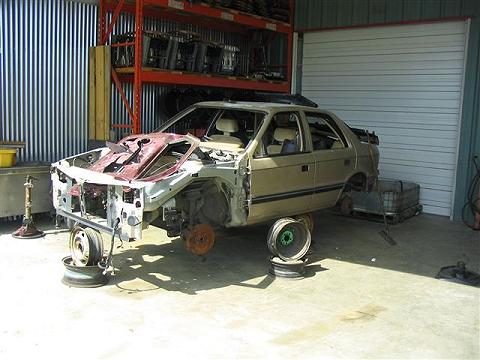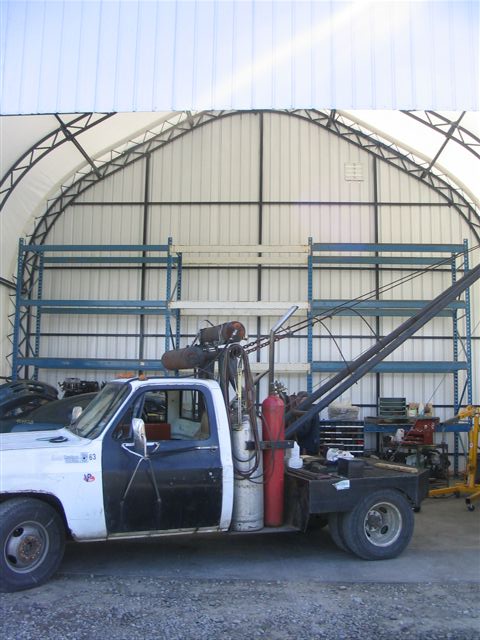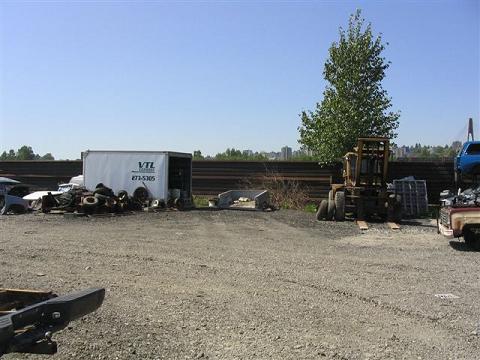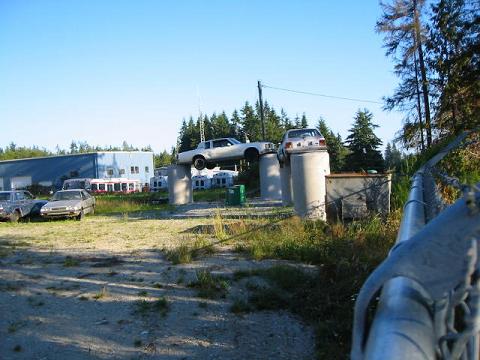Dismantling & Receiving
Dismantling Area - Best Management Practices
01.
Fluids removal
all fluids removed in dismantling area (fuels can be removed outside dismantling area to prevent fire damage, but some sort of containment system for gas and diesel is required);
02.
Fluid Amount
dismantling area must be able to contain 20 litres of fluid through some sort of secondary containment;
03.
covered area
dismantling area must be covered and have impervious floor (concrete makes the best floor - avoid asphalt);
04.
Oil/water Seperation
dismantling area does not have drain to oil/water separator;
- All fluids removed in dismantling area (fuels can be removed outside dismantling area to prevent fire damage, but some sort of containment system for gas and diesel is required);
- Dismantling area must be able to contain 20 liters of fluid through some sort of secondary containment;
- Dismantling area must be covered and have impervious floor (concrete makes the best floor – avoid asphalt);
- Dismantling area does not have drain to oil/water separator;
- Dismantling area is not washed with soap and water;
- Dismantling area is located in an area of the yard that does not flood during average precipitation events and snowmelt;
- Dismantling area is clean and uncluttered.
05.
Soap and water
dismantling area is not washed with soap and water;
06.
Flooding
dismantling area is located in an area of the yard that does not flood during average precipitation events and snowmelt;
07.
Uncluttered
dismantling area must be clean and uncluttered.
Examples of Good practices

Clean and Organized
A good example of a dismantling area incorporated into a building. Open to the front for easy access. Spills cleaned up. No clutter for workers to trip and fall. No drains. This dismantling bay is also high enough to prevent the runoff from entering the dismantling bay.

Fast safe removal of fluids
Another good example of a dismantling area. There are two pumps featured in this photo that help the recycler quickly remove the fluids from the vehicle. The more common hand pump is on the right and the newer red container on the left that creates a vaccum using compressed air – simply hook this equipment to your air supply and it will suck out the fluids fast – saving time is like saving money.
Also notice the spill equipment at the back right of the picture. A broom, shovel and absorbent is all you need. Remember to dispose of the contaminated absorbant materials as a hazardous waste.
Finally, storing hazardous materials in the dismantling area is a good idea if there is secondary containment. Having the barrels of hazardous materials close to the dismantling area saves time and reduces the risk of spills.



Slopped Drain Pad
This is an example of a typical dismantling bay using a tent. Open to the front so that the forklift can get in an out. Make sure when you pour a new pad (or modify your existing pad) that it is sloped so that spills cannot drain from the dismantling bay to the outside. Its also a good idea to plug off any drains to oil water separators in the dismantling area. Oil/water separators are not designed to handle large spills of oil and spills of antifreeze will not be retained by the separator.

Examples of Bad practices

Oil run off risk
Here is an example of a bad dismantling area. There is a concrete pad and a cover, but there is no way to prevent spills from running away from the dismantling area. Further the dismantling area is adjacent to a ditch that is less than 50 metres from the Fraser River and the Federal Fisheries Act is an important consideration for this yard

No pad oil spill risk
| Here is another yard with no roof and no pad. There is 1.5 metres (5 feet) of rain annually in the Vancouver area. Is it any wonder that this yard has problems retaining staff. The owner told me that they try very hard not to spill fluids on the ground – trying is not good enough. |


Examples of Dangerous practices

Very Unsafe
This is irresponsible practice! I wonder what the Workers Safety Board would say about this yard. Even more troubling is that the people that operate this yard are volunteer fire fighters – they should know better!

Dirty and Safety Hazard
This is a very disorganized dismantling area and a safety hazard for the workers. How can anything get done in this dirty area. At least the dismantling area is covered and has a concrete floor.


